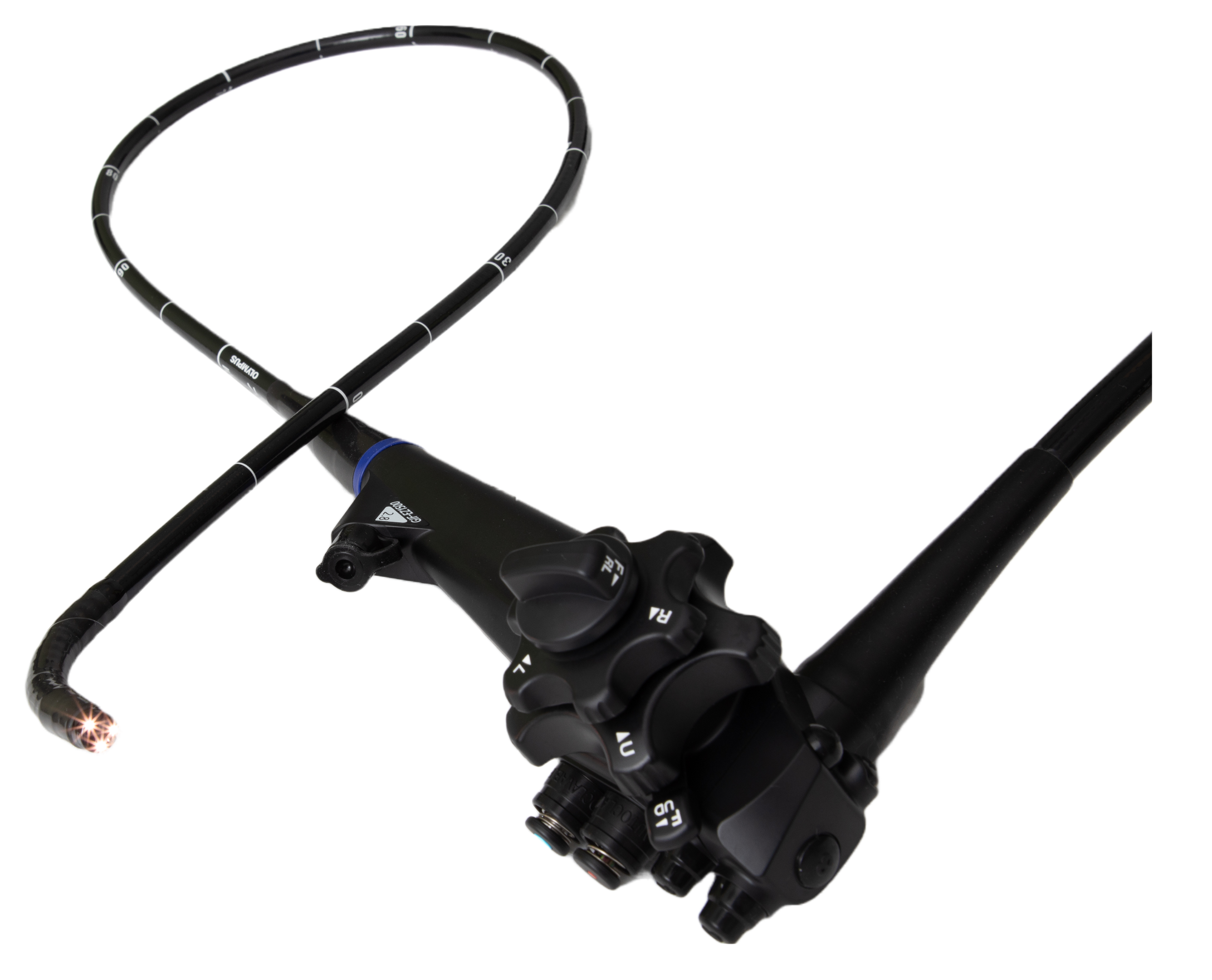Services
What is Oesophago-gastro-duodenoscopy (OGD)?
Oesophago-gastro-duodenoscopy (OGD) is an examination of the inside of the upper digestive tract by using a flexible video-endoscope which is passed through the mouth into the oesophagus, stomach and duodenum. It allows your doctor to have direct vision of the upper digestive tract and to detect pathological change, for example, tumour, ulceration or polyps etc. Your doctor will take biopsy for pathological examination and may perform polypectomy and therapeutic haemostasis when necessary.

Why is OGD performed?
- Anaemia or gastrointestinal bleeding
- Stomach ache
- Gastroesophageal reflux
- Difficulty in swallowing
- Unexplained abdominal pain
- Polyps / tumours
- Gastric cancer screening
- Removal of swallowed objects, e.g. Fishbone

What is Colonoscopy?
Colonoscopy is a procedure that enables the examiner to view the inside of the large bowel. This is accomplished by passing a flexible video-endoscope through the anus into the rectum, then advancing slowly through sigmoid colon, descending colon, transverse colon, ascending colon and lastly to the caecum.
The examiner can have direct vision of the colon and pathological changes inside the colon, such as tumour, ulceration or polyps. Doctor may take biopsy for pathological examination, perform polypectomy and therapeutic haemostasis when necessary.

Why is Colonoscopy performed?
- Blood in stool
- Anaemia
- Change in the bowel habits
- Chronic diarrhoea
- Unexplained abdominal pain
- Colorectal polyps / tumours
- Colon cancer screening
How can Gastrointestinal Endoscopy help prevent gastrointestinal cancers?

Among all the cancers along the digestive tract, colorectal cancer is the most common one, accounting for the second commonest cancer in Hong Kong. In many of the gastrointestinal cancers, particularly colorectal cancer, they start as polyps or mild abnormalities in the lining of the gastrointestinal tract, which if removed early, can prevent their progression into cancer stage.
By passing an endoscope to the digestive system, the camera at the tip of the endoscope allows early detection and biopsy of areas suspicious of cancer or pre-cancer changes, facilitating earlier diagnosis and treatment. Through the same procedure, treatments may also be performed to remove abnormal lesion at early stage (e.g. removal of polyp, laser ablation and endoscopic resection of mucosal lesion in the oesophagus or stomach) allowing early control of the disease.
Is it dangerous to perform Gastrointestinal Endoscopy?
Gastrointestinal endoscopies are safe procedures. Although complications may occur, they are rare. Thorough assessment by experienced specialists are needed prior to the examination. Please inform your doctor should you have any of the followings:
- Chronic illnesses (e.g. diabetes mellitus, hypertension, heart disease etc.)
- Regular medications (e.g. diabetic medications, blood pressure medications, anti-platelet or blood thinner etc.)
- Suspected or confirmed to be pregnant
- Feel unwell before the procedure
Preparing for a Gastrointestinal Endoscopy
Different endoscopic examinations require different diet and bowel preparation beforehand. Some of your medications may need to be withheld before the procedure. Specific instructions will be provided by your doctors prior to the examinations.

What happens during a Gastrointestinal Endoscopy?
Before the endoscopy begins, an anaesthetic procedure will be performed to minimise your discomfort.
During the endoscopy, a flexible tube with a video scope at the tip (i.e. endoscope) will be inserted to examine the lining of the digestive tract (through the mouth to examine the stomach in OGD; through the anus to examine the large bowel in Colonoscopy and Sigmoidoscopy).
If indicated, detectable polyps can be removed for examination. Abnormal areas can also be biopsied to investigate for their underlying pathology.
What happens after a Gastrointestinal Endoscopy?
- After the procedure, patient should stay in bed until the sedative effect of anaesthetic drugs has completely worn off.
- Please arrange a responsible adult to accompany you when you leave our centre.
- For patients who had OGD, you may feel numb at your throat because of the anaesthetic spray given prior the procedure. It takes about 45-60 minutes for this effect to wear off.
- Patient can only resume oral intake 1 hour after OGD.
- As doctor will pump air into the stomach and colon to enhance visualization, there may be mild gastric distension or stomach ache after the procedure. If there is severe abdominal pain, medical personnel must be consulted immediately.








